#world mythology
Photo

World map mural
690 notes
·
View notes
Text
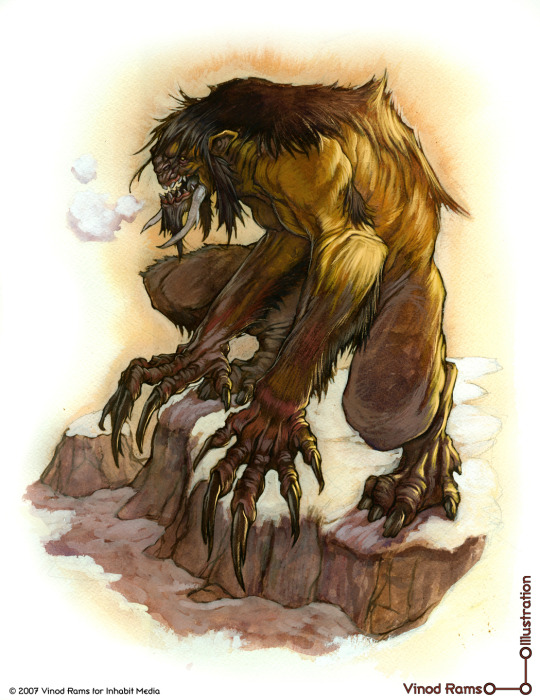
The Kukilialuit [Inuit mythology]
According to Inuit mythology, the frozen landscapes of Canada and Greenland are home to a mysterious and highly dangerous race of monsters. They are called the Kukilialuit, and while that name is often translated as ‘trolls’ or a different common word for monsters, their most defining characteristics are their long and viciously sharp claws, said to be like knives. Literally translated, the name Kukilialuit means something like “those beings with great claws”. Aside from their hands, they have a humanoid body.
Supposedly, the Kukilialuit live inland, far away from the coasts. Despite their monstrous nature, they are intelligent and build huts to survive the winter. Whether these are isolated huts or built together in a society or settlement is unclear.

What we do know is that they are relentless hunters and regularly eat human flesh. After killing a victim, the Kukilialuit carry their prey away and vigorously slice the flesh from their bones until only the skeleton remains. Slingerland and Collard use the story of a Kukilialuit as an example of folktales where lone travelers (or people who get isolated from a group) get picked off by monsters, teaching the audience that traveling by yourself is dangerous in inhospitable environments like the Arctic.
Only a particularly powerful Angakkuq (an Inuit shaman) can escape from these monsters.
Sources:
Christopher, N., 2013, The Hidden: a compendium of arctic giants, dwarves, gnomes, trolls, faeries, and other strange beings from Inuit oral history.
Slingerland, E. and Collard, M., 2011, Creating Consilience: Integrating the Sciences and the Humanities, New Directions in Cognitive Science, Oxford University Press, 472pp., p.634.
(image source 1: Vinod Rams)
(image source 2: Ethan Nicolle)
67 notes
·
View notes
Photo

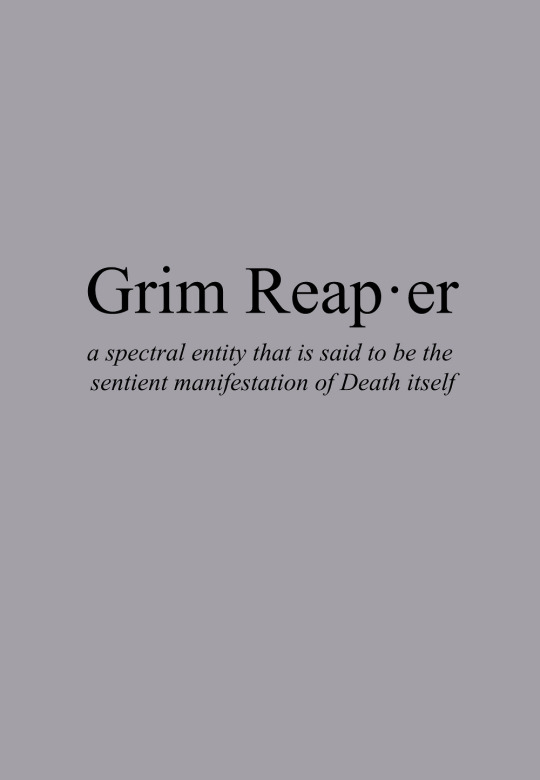

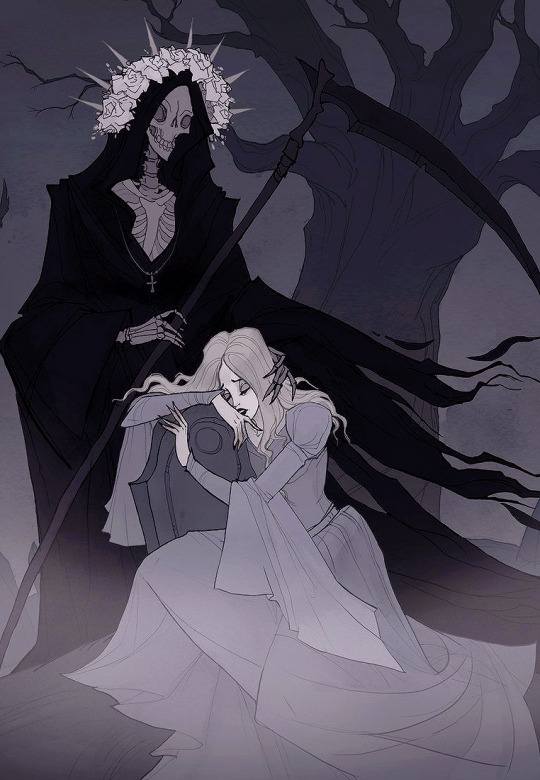
The Evermore Grimoire: World Mythology
The Grim Reaper is a spectral entity that is said to be the sentient manifestation of Death itself. Since the 15th century, Death has commonly been perceived to be an animated human skeleton, draped in pitch black robes and carrying a scythe. With this scythe, the Reaper severs the soul's last ties to life and thus granting it safe passage to the afterlife. The Grim Reaper has often falsely been depicted as an evil spirit that preys on mortals. In truth, however, they are neither evil nor good, but merely a force of nature and order. Death is also fundamental part of life and it is the Grim Reaper's duty to claim the souls of the deceased so as to maintain the balance of nature. The Reaper does not ‘kill’ mortals, but merely guides their spirits to the next realm as it’s not their place to judge souls or determine what will become of them.
artwork by IrenHorrors
#MythEdit#MythologyEdit#World Mythology#FantasyEdit#Grim Reaper#Halloween Monsters#Halloween#My Edit
710 notes
·
View notes
Text
for anyone interested in arthurian folklore and/or mythology around the world: an efficient source
recently i found this website and it has been incredibly helpful with research for my projects (and just research for interest's sake). for arthurian folklore, especially, there are not only many different versions of each story, but many different pronunciations for each name, many different names for each character - you get the idea. in my opinion, this website displays a good variety of each legend while still getting the point across rather simply.
here it is: Nightbringer
i'm going to be reblogging some other good websites/pages for folklore; view my blog page for the other ones :) also, if my fellow writers/nerds/autistic people out there want to add to this thread, i will appreciate and explore every single one of your suggestions
#lore#greek mythology#irish mythology#arthurian legend#arthurian mythology#arthurian literature#sources#history#folklore#celtic folklore#world mythology#merlin rewrite#writers on tumblr#fanfic writer#writerscommunity#writers and poets#ao3 writer#writer things#writeblr#creative writing#writing community
121 notes
·
View notes
Text
AGAINST ALL GODS is out in Mass Market Paperback now, and STORMING HEAVEN is out 20th July!


He's also just done a fascinating interview on the latest episode of The Publishing Rodeo!
#Miles Cameron#Against All Gods#Storming Heaven#Age of Bronze#fantasy novels#bronze age fantasy#world mythology
40 notes
·
View notes
Text
Fantastic Creatures of the Greco-Roman Mythology: The Chimera
Author’s note: The following article was previously published in Spanish language in my Blurt blog on September 13th, 2023. Banner elaborated with Canva; source of the image: Wikipedia.
In the past post we talked about Typhon, fantastic monster who’s remembered for its legendary battle with Zeus, king of the gods, whom he defeated at first, only to be buried on Mount Etna. We also explain how…
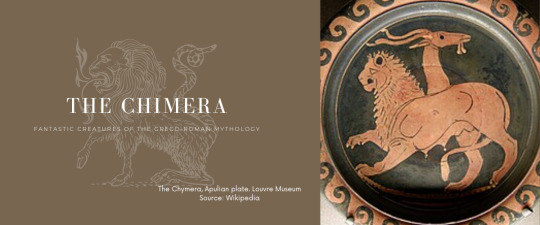
View On WordPress
25 notes
·
View notes
Text

In western mythos, we are mostly familiar when a feminine moon and masculine Sun. In certain traditions around the world, especially in folklore concerning solar eclipses, the sun is instead feminine and the moon is masculine:
In Norse mythology, the solar goddess Sol and lunar god Mani are sister and brother.
In Tahitian myth, the Sun goddess and mother of rice, Padi, and the dark moon (each moon phase has varying names) are lovers who are said to be getting ‘lost in the moment’ when they create a solar eclipse.
Inuit lore has told of the Sun goddess Malina being chased across the sky by her brother, the moon god Igaluk. Occasionally he catches up with her for a brief reunion and everything goes dark.
In the indigenous Euahlayi stories from Australia, the Sun is a woman, Yhi, and the moon as a man, Bahloo. Yhi falls in love with Bahloo and chases him across the sky. Yhi tells the spirits that hold up the sky that if they let Bahloo escape then she will plunge the world into darkness. So during a total solar eclipse, medicine men traditionally chant to connect with the spirits of the sky to allow the moon, Bahloo, to continue to enchant and Yhi in this celestial chase.
I made this illustration adapted from my tattoo flash for Magic PJ’s PMU & Tattoo to share this with you.
#mythology and folklore#solar eclipse#sun goddess#traditional tattoo#celestial#whimsicore#astro art#world mythology#folklore#alchemical symbolism
7 notes
·
View notes
Video
Tumblr didn’t like the GIF version, so hopefully the video will loop nicely.
The Aswang is a Filipino term for many shapeshifting monsters, and this vampiric creature whose body splits in half at night is one of them.
84 notes
·
View notes
Text
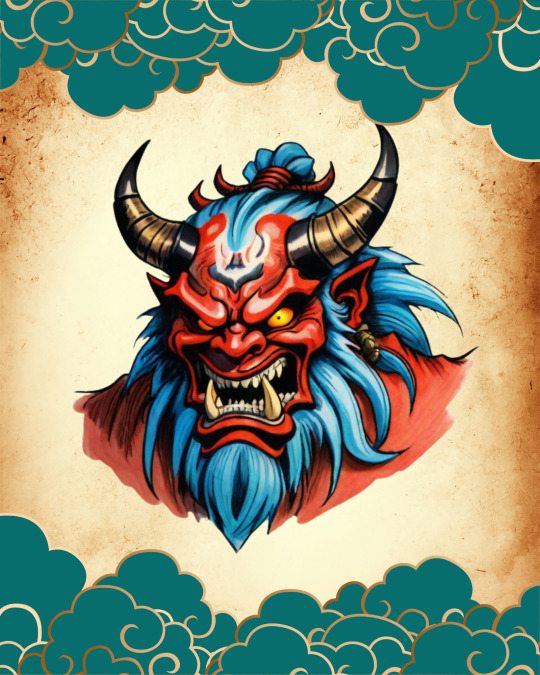
In Japanese folklore, Oni are demonic creatures known for their giant size, great strength, and terrifying appearance.
They were believed to have the ability to transform into animals or even disguise themselves as humans.
However, in modern times, they are typically depicted as humanoid beings with horns and sharp teeth. Despite their cruel and malicious nature, Oni can be converted to Buddhism.
Known for their strength, Oni are often portrayed as taking over shrines or villages. Their strength is usually fueled by anger or rage, as seen in titles like "Oni of Infinite Rage".
To defeat an Oni, one must cut off all its limbs before it touches the ground again, or it will regenerate and continue its attack.
#oni demon#oni myth#oni#japanese folktale#japanese demon#japanese folklore#mythology and folklore#mythical monsters#deamon#yokai monsters#ai art#japanese yokai#yokai#yōkai#legendary creature#mythical creatures#mythologies#world mythology#ancient world
6 notes
·
View notes
Text
The whimsical soul of ships

According to the folklore of the sailors of the North Sea and the Baltic Sea, on long voyages they always had company on their ships. It was an invisible crewman who made himself subtly or outrageously noticeable: the ship's spirit.
The ship's spirit was a type of elf that the Norwegians call nisse, the Swedes tomte and the Finns tomtenisse or tontu, i.e., it belongs to the same type of beings as Santa's helpers. In Germany, the equivalent of these beings was the kobold; in Brittany, France, it is a lutin or luiton; in the Netherlands, it was a kabouter(man), while in Great Britain it was a puck, pixie or brownie. On the whole, they are mischievous little domestic or nature creatures that help those who favor them and harm those who do not. However, as these creatures are best known when on a ship is by their German name, klabautermann ("Striker"). In Denmark, it may appear assimilated with skibsnisse, while in the Frisian Islands, Schleswig-Holstein and Pomerania it may appear assimilated with puck.
The klabautermann was a ship-dwelling goblin. As a goblin, he was a small, pipe-wielding being who acted according to the respect he received. If he was well cared for, the voyages prospered and the ship was protected. Because of this, he can appear as a carpenter who fixes at night everything that breaks during the day, which is why he is also called klütermann. Conversely, if he was abandoned, the ship would meet its end. When he was heard restlessly running about the shrouds, making noises in the rigging and in the hold, it was the signal for the crew to leave the ship immediately. His mood also manifested itself in less extreme situations. He was believed to maintain order and discipline on the ship by shouting orders, especially among the young and unruly crewmen. To sailors, he could be both a help and a hindrance, hitting them on the head, humiliating them, taunting them or punishing wrongdoers. In fact, the name klabautermann was derived from the commotion he caused.

Besides looking like a carpenter or smoking a pipe, he wore yellow breeches, horseman's boots, a red or gray jacket and a cap like that of the American pilgrims, also reminiscent of the top hat of the leprechaun. He had a large red head and green teeth and used to sit under the halter. The horseman's boots, with which he used to appear in calm seas, could be related to horse latitudes near the equator, at 30° north latitude and 38° south latitude. It seems that these received their name because, in this area of high pressure, travel was slower, having to ration water and slaughter the horses that consumed more.
Now, how was the klabautermann born? Well, according to the beliefs, the soul of a ship was the same that was in the wood of the trees. The trees could have obtained the soul of a human being or possessed the soul of another being. This is possibly related to the Vårdträd or Tuntre, sacred trees planted on special occasions that represented ancestors and nature spirits.
Although it is a connection without unanimous support, it is related to Seals of Sinope, to whom traditionally sailors served a portion of each meal. This was bought by a traveler, whose money remained in the hands of the captain to be distributed among the poor upon arrival at port.
13 notes
·
View notes
Text
Y'know what's sad about 'w3ndigo' discourse I just described in my second-to-last reblog? Genuinely I DO think that the creatures outlined in creepypasta are cool. Even before Nowhere King, there really isn't anything cooler than a humanoid skeley deer monster. It's just...I really think the "modern w3nd!go" should either be renamed or better separated from the creature/character/spirit/omen in Algonquin languages.
Mostly for the sake of the Algonquins, of course, but also I think that it an important thing to do when we're talking mythology. There's a reason (unless you're Vivziepop) that we differentiate from demons and angels as they appear in western media vs how they are in the Lesser Keys of Solomon and actual Christian text. Where mythological deities and creatures can roughly function similarly, there is a start contrast between what is prayed to vs what is sold to you.
You don't mix up classical european fae-folk with Tinkerbelle or you're gonna get a lecture from some mythology nerd who really likes faeries, same with vampires, same with greek monsters, same with (for me) krampus. Differentiating, setting boundaries and drawing out the difference between what is 'accurate' to a culture vs what is the fun of a story is important. The problem is Indigenous cultures and religions are so rife w people appropriating them even when they don't mean to.
Point being: I really want the deer-headed hangry cannibal demon things that stalk the woods in creepypasta to be renamed to something not associated with indigenous lore. Like I said- everyone loves a deer skeleton. It's not like any other part of the world lacks for creepy deer, like perytons from Argentina f.e. Why CAN'T they be renamed?
Because, since they aren't separated, A LOT OF people genuinely think that the deer-pasta creatures are accurate to Algonquin myths and/or 'up for grabs'. No. It's not. My sister knows someone who still legit calls every deer-skull thing he sees a "w3ndigo" because he learned it from creepypasta and won't un-learn it.
We mythology geeks can unlearn it. Free the deer beasts from the curse and let the Algonquin have their preferred omen back. This is a sacred custom we are outsiders to.
3 notes
·
View notes
Text

This is the whitest response list I’ve ever seen
ARES?????? ARES AS ONE OF THE STRONGEST GODS IN THE WORLD???? HE’S NOT EVEN IN THE TOP 100 I HAVE TO LAUGH
#greek mythology#ares deity#zeus god#zeus greek mythology#odin#thor#norse gods#norse deities#norse folklore#world mythology#mythology memes
31 notes
·
View notes
Text

The Changfu [Chinese mythology]
Foundation Mountain is a – presumably fictional – location mentioned in the ancient Chinese work Shan Hai Jing, the Classic of Mountains and Seas. Strange creatures dwell on the slopes of this mountain, such as a goat with four ears, nine tails and a set of eyes located on its back.
One of these bizarre species is the Changfu, a mythical bird with three heads and six legs. It also has a third wing on its back, but aside from these extra extremities it resembles a normal chicken.
Not much is known about their ecology or behaviour, but its meat has a special characteristic to prevent the eater from sleeping. Those who hunt and consume a Changfu will find themselves unable to sleep.
Source:
Strassberg, R. E., 2002, A Chinese Bestiary: Strange creatures from the Guideways through the Mountains and Seas, 313 pp., p.87-88.
(image source: Behane on Deviantart)
50 notes
·
View notes
Photo
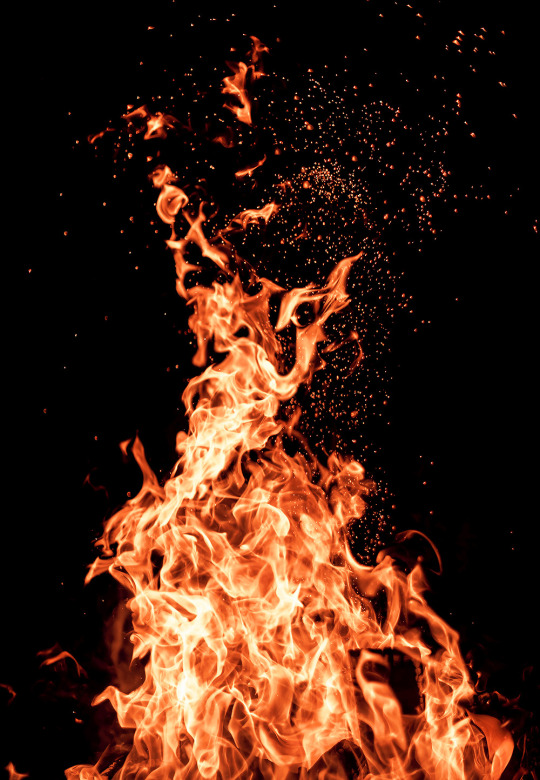


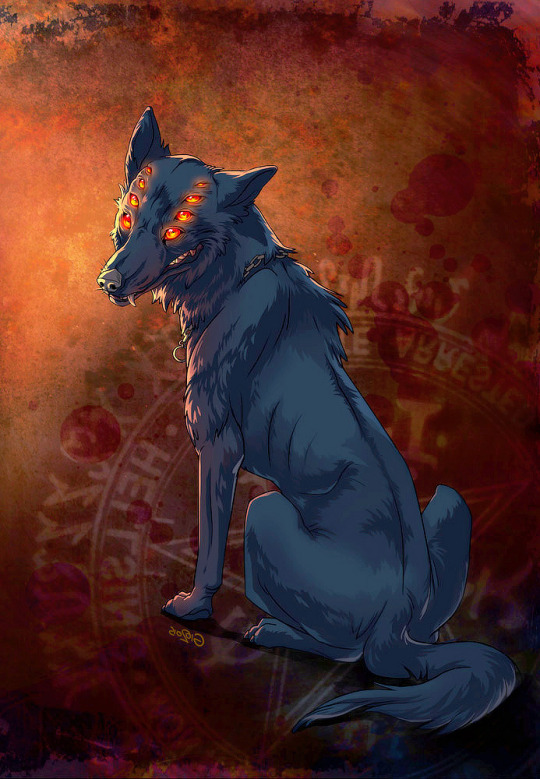
The Evermore Grimoire: Shapeshifters
A Hellhound is a supernatural dog in folklore that originates from the Underworld. The Hellhound has been seen several times throughout history, and it is not specific to any one place, but they are commonly associated with graveyards and the underworld. While considered a bad omen, the hellhound has often helped many as well. It was also said to warn people of danger and protect them when they needed it. The dog is often very loyal to those who call upon one and is said to be very watchful. While the creatures are often known as evil, they are not as evil as one would suggest. Seeing a hellhound or hearing one howl may be an omen or even a cause of death. Hellhounds are called ‘The Bearers of Death’ because they were supposedly created by ancient demons to serve as heralds of death.
artwork by giovannag
759 notes
·
View notes
Text
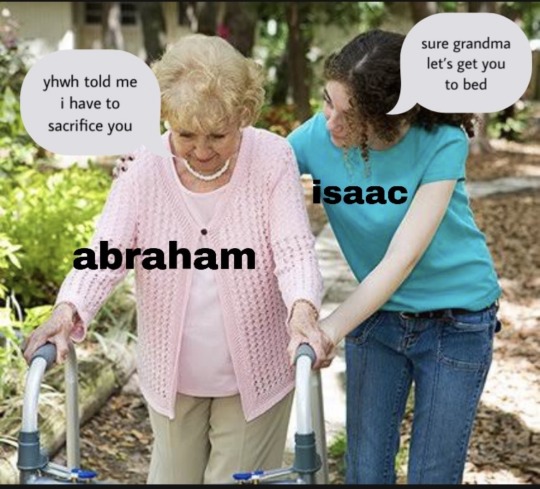
#religion#skepticism#skeptical#funny#meme#judaism#christianity#old testament#abraham#abraham and isaac#the binding of isaac#world mythology#mythology and folklore#tanakh#reason#atheisim#apatheism#agnosticism#agnostic#gnostic#gnosis
11 notes
·
View notes
Text
Wanna see something sexy?

There is nothing that makes me happier than a well-designed series of covers. LOOK AT THEM. Gorgeous.*
*fun fact - when AGAINST ALL GODS came out, there was a review left on a website complaining it wasn't historically accurate because there were giant bugs. Apparently the first fews chapters of gods squabbling, possessing corpses and generally committing atrocities struck them as A Okay.
#Storming Heaven#Against All Gods#Miles Cameron#The Age of Bronze#Epic fantasy novels#Bronze Age mythology#World mythology
9 notes
·
View notes